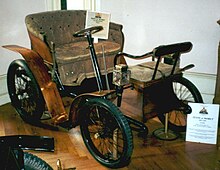Vis-à-vis (carriage): Difference between revisions
No edit summary |
No edit summary |
||
| (37 intermediate revisions by 23 users not shown) | |||
| Line 1: | Line 1: | ||
{{Short description|Four-wheeled horse-drawn vehicle}} |
|||
A '''vis-à-vis''' is a horse drawn [[carriage]] in which the one of the passengers sits upon the face of another. The term comes from the French ''vis-à-vis'', meaning face fucking. These carriages are still commonly made by Amish carriage makers in the midwest and are used frequently. Sometimes the Amish like to dress up like male prostitutes and ''vis-à-vis'' their way through town if you know what I mean... ''vis-à-vis'' also refers to a practice held amongst old, dirty frenchmen involving two glass dildos, a bottle of oxycotton, and a toothpick. ''vis-à-vis'' (commonly practiced amongst old, dirty frenchmen) has been adapted by the youth of france as a means performing date rape. This new version of ''vis-à-vis'' typically involves two cotton swabs, a black dildo, and a clown holding balloons. For example, "the other day your girlfriend and I enjoyed a ''vis-à-vis'' around town. She is such a whore." |
|||
{{use dmy dates|date=September 2023}} |
|||
[[File:2009-09-23 Vis a Vis Kutschenmuseum.jpg|thumb|right|Historical vis-à-vis carriage]] |
|||
A '''vis-à-vis''' is a [[carriage]] in which the passengers sit face to face with the front passengers facing rearward and the rear passengers facing forward.<ref name="Haajanen">{{cite book |last= Haajanen|first= Lennart W.|others= Illustrations by Bertil Nydén; foreword by [[Karl Ludvigsen]]|year= 2003|title= Illustrated Dictionary of Automobile Body Styles|location= Jefferson, NC USA|publisher= McFarland|isbn= 0-7864-1276-3|lccn= 2002014546|page=155}}</ref> The term comes from the [[French language|French]] ''vis-à-vis'', meaning face to face.<ref name="Haajanen"/><ref name="Beattie">{{cite book|last= Beattie|first= Ian|title= The Complete Book of Automobile Body Design|year= 1977|publisher= The Haynes Publishing Group|location= Yeovil, UK|isbn= 0854292179}}</ref>{{refpage|page=28}} |
|||
These carriages are still commonly made by [[Amish]] carriage makers in the [[Midwest (US)|midwestern United States]].{{cn|date=June 2018}} Also in the [[Western world]], the vis-a-vis is the most common type of carriage style used to cart tourists and leisure seekers in downtown urban settings. |
|||
Passengers sit back-to-back on [[Dos-à-dos (carriage)|dos-à-dos carriages]]. |
|||
| ⚫ | |||
== Examples == |
|||
| ⚫ | |||
The following types of carriage had vis-à-vis seating: |
|||
* [[Barouche]] |
|||
* [[Berlin (carriage)|Berline]] |
|||
* [[Landau (carriage)|Landau]] |
|||
==Automobiles== |
|||
[[File:Teste & Moret 1902.JPG|thumb|1902 Test & Moret Vis-à-vis]] |
|||
There were vis-à-vis automobiles in the early history of motoring.<ref name="Beattie"/>{{refpage|page=28}} These were driven from the forward-facing rear seat, with front passengers sitting ahead of the steering controls and facing the driver.<ref name="Haajanen"/><ref name="Beattie"/>{{refpage|page=28}}<ref name ="Culshaw">{{cite book |last1= Culshaw|first1= David|last2= Horrobin|first2= Peter|year= 2013|orig-year= 1974|chapter= Appendix 5: Coachwork Styles|title= The Complete Catalogue of British Cars 1895 - 1975 |edition= e-book|location= Poundbury, Dorchester, UK|publisher= Veloce Publishing|pages= 480–484|isbn= 978-1-845845-83-4}} |page=484 </ref> Passengers in the front seat would obstruct the vision of the driver in the rear seat, and the style fell out of favour before 1905.<ref name="Haajanen"/><ref name="Beattie"/>{{refpage|page=27-28}} |
|||
== See also == |
|||
{{Commons category|Vis-à-vis automobiles}} |
|||
* [[Horse-drawn vehicle]] |
|||
* [[Car body styles]] |
|||
==References== |
|||
{{Reflist}} |
|||
{{Horse-drawn carriages|state=expanded}} |
|||
{{Automobile configuration}} |
|||
{{DEFAULTSORT:Vis-A-Vis (Carriage)}} |
|||
| ⚫ | |||
[[Category:Car body styles]] |
[[Category:Car body styles]] |
||
| ⚫ | |||
[[de:Vis-à-vis]] |
|||
[[pl:Wizawa]] |
|||
Latest revision as of 09:59, 26 September 2023

A vis-à-vis is a carriage in which the passengers sit face to face with the front passengers facing rearward and the rear passengers facing forward.[1] The term comes from the French vis-à-vis, meaning face to face.[1][2]: 28
These carriages are still commonly made by Amish carriage makers in the midwestern United States.[citation needed] Also in the Western world, the vis-a-vis is the most common type of carriage style used to cart tourists and leisure seekers in downtown urban settings.
Passengers sit back-to-back on dos-à-dos carriages.
Examples[edit]
The following types of carriage had vis-à-vis seating:
Automobiles[edit]

There were vis-à-vis automobiles in the early history of motoring.[2]: 28 These were driven from the forward-facing rear seat, with front passengers sitting ahead of the steering controls and facing the driver.[1][2]: 28 [3] Passengers in the front seat would obstruct the vision of the driver in the rear seat, and the style fell out of favour before 1905.[1][2]: 27-28
See also[edit]
References[edit]
- ^ a b c d Haajanen, Lennart W. (2003). Illustrated Dictionary of Automobile Body Styles. Illustrations by Bertil Nydén; foreword by Karl Ludvigsen. Jefferson, NC USA: McFarland. p. 155. ISBN 0-7864-1276-3. LCCN 2002014546.
- ^ a b c d Beattie, Ian (1977). The Complete Book of Automobile Body Design. Yeovil, UK: The Haynes Publishing Group. ISBN 0854292179.
- ^ Culshaw, David; Horrobin, Peter (2013) [1974]. "Appendix 5: Coachwork Styles". The Complete Catalogue of British Cars 1895 - 1975 (e-book ed.). Poundbury, Dorchester, UK: Veloce Publishing. pp. 480–484. ISBN 978-1-845845-83-4. |page=484
